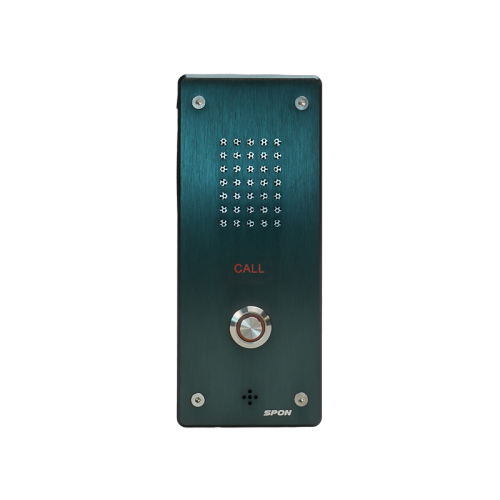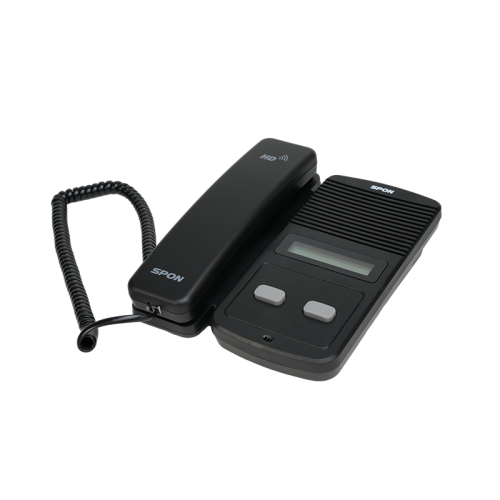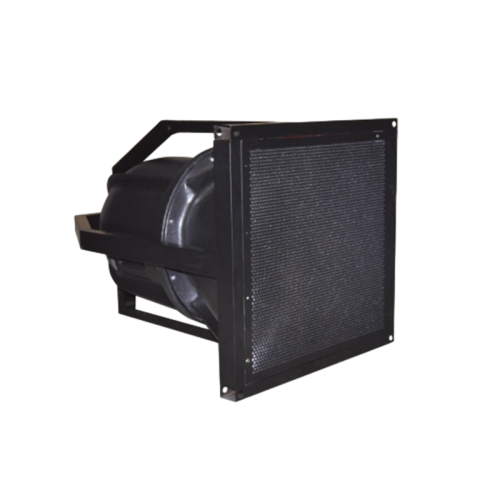The Ultimate Guide to Establishing Your IP PA System Effectively
The Ultimate Guide to Establishing Your IP PA System Effectively
Blog Article
Comprehensive Overview to Public Address Equipments
Public address (PA) systems are generally run into in numerous tasks such as office complex, residential facilities, industrial office complex, institutions, healthcare facilities, train terminals, airport terminals, bus factories, financial institutions, and terminals - IP Paging System. This overview will provide a thorough summary of PA systems

Parts of a PA System
Regardless of the type of PA system, it generally includes 4 primary components: source equipment, signal boosting and processing devices, transmission lines, and audio speaker systems.
Resource Devices
Music Players: Used for history songs.
Microphones: Includes zone-select microphones and common microphones.
Voice Storage Devices: For keeping service and emergency program messages.
Signal Handling and Amplification Devices
Sound Signal Processor: Manages audio signal payment, depletion, equalization, and so on.
Pre-Amplifier: Pre-amplifies sound signals.
Power Amplifier: Magnifies audio signals to drive speakers, giving continuous voltage outcome.
Transmission Lines
The service management system software program permits the surveillance facility to put in central governance over the program and intercom communication systems. It facilitates live tool standing surveillance, fault medical diagnosis, and troubleshooting, solidifying system dependability and uniformity.
Audio speakers
Ceiling Audio Speakers: Indoor, flush-mounted in the ceiling, consistent voltage or consistent resistance.
Wall-Mounted Audio speakers: Wall-mounted, consistent voltage or continuous resistance.
Column Audio Speakers: Free-standing, appropriate for exterior or interior use.
Horn Audio speakers: High sensitivity, appropriate for indoor or outdoor usage.
Concealed Audio speakers: For outdoor settings like yards or parks, designed to appear like mushrooms, stumps, or rocks.
Sound Technical Specifications of PA Solutions
In daily atmospheres, typical sound pressure levels are:.
• Office sound: 50-60 dB.
• Regular conversation: 65-70 dB.
• Fabric manufacturing facility sound: 110-120 dB.
• Tiny quality shooting: 130-140 dB.
• Large jet aircraft sound: 150-160 dB.
Signal-to-Noise Proportion (SNR)
SNR measures the proportion of the signal voltage to noise voltage, expressed in decibels. A greater SNR shows much less sound and much better audio top quality. Generally, SNR should go to least 63 dB, with high-fidelity audio speakers getting to over 110 dB.
Input Level of sensitivity
This is the minimal input voltage needed to achieve the ranked outcome power. Higher level of sensitivity suggests much less input signal is needed. Normally, power amplifiers have an input sensitivity of 0.775 V (0 dB) to 1.5 V (+6 dB).
Maximum Result Power (Speakers)
The optimal power a speaker can take care of simply put ruptureds without damages.
Rated Power (Audio Speakers)
.
The continuous power an audio speaker can deal with without distortion, gauged in watts (W) Rated power is an average worth, and speakers can take care of peak power up to 2-3 times the ranked power.
Consistent Voltage vs. Constant Resistance Outputs
Continuous Voltage (70V or 100V)
Makes use of voltage to drive speakers, enabling longer transmission distances and multiple audio speakers in parallel. Nevertheless, audio quality is a little inferior compared to continuous impedance systems.
Power amplifiers have to match the voltage ranking of the audio speakers to avoid damage.
Constant Impedance.
Makes use of present to drive audio speakers, offering much better audio quality but restricted transmission range (up to 100 meters)
Insusceptibility matching is critical; for instance, an 8Ω amplifier must be matched with 8Ω speakers.
Choose and Configuring Audio Speakers
Speaker Option
Indoor Spaces with Ceiling: Use flush-mounted ceiling speakers without a rear cover.
Indoor Spaces with Just a Framework: Usage ceiling audio speakers with rear covers or hanging ball-type audio speakers.
Exterior Areas: Usage weatherproof column speakers or horn speakers.
Parks and Gardens: Use concealed speakers created for visual objectives.
High-End Interiors: Usage sophisticated dangling audio speakers.
Fire-Safe Locations: Use fire-resistant audio speakers with covered layouts.
Speaker Configuration
Speakers should be distributed evenly across the solution location to make certain a signal-to-noise proportion of at the very least 15 dB. Normal history noise degrees and advised audio speaker positioning are:.
High-end workplace corridors: 48-52 dB.
Large buying malls: 58-63 dB.
Hectic road areas: 70-75 dB.
Audio speakers should be positioned to guarantee a sound stress level of 80-85 dB in the majority of environments. Ceiling speakers should be spaced 5-8 meters apart, or 8-12 meters for history music only. For emergency broadcasts, make sure that no location is greater than 15 meters from the closest speaker.
Amplifier Sizing
Calculation Method:
For solution and service PA systems: P= K1 × K2 × ΣPo where:.
P = Total amplifier outcome power (W)
K1 = Line loss payment element.
K2 = Aging factor (1.2-1.4)
ΣPo = Overall power requirement.
For fire alarm systems, use 1.5 times the complete number of audio speakers.
Instance Computation:
For a history songs system with 10 audio speakers at 20W each: P= 1.26 × 1.2 × 10 × 20W × 0.7= 211W.
Last amplifier capacity ought to be 1.3 times this worth: 211W × 1.3= 274W
Installment Requirements
Audio speaker Placement
Speakers must be evenly and strategically dispersed to meet insurance coverage and sound quality needs
Power Supply
Small PA systems can use normal power electrical outlets, while systems over 500W need a devoted power supply. Power needs to be stable, with automated voltage regulators if essential. The power supply must be 1.5-2 times the devices's power intake
Cable and Channel Installment
Usage copper-core cable televisions for signal transmission. Wires ought to be protected and routed with appropriate channels, preventing disturbance from electric lines. Guarantee correct separation in between power and signal lines.
Lightning Defense and Grounding
PA systems call for correct grounding to avoid damages from lightning and electric disturbance. Use committed grounding for devices and make certain all basing measures satisfy safety and security criteria
Installation High quality
Cable Television and Adapter Top Quality
Use premium cords and connectors. Make sure links are safe and appropriately matched to avoid signal loss or interference.
Speaker Connections
Keep proper stage positioning between audio speakers. Use reliable techniques for linking cables, such as soldering or terminal blocks, and safeguard connections from environmental damage.
Grounding and Safety Checks
Verify all grounding is correctly mounted and examine the safety and security of power links and equipment settings. Perform complete examinations prior to wrapping up the installment.
Checking and Adjustment
Test the whole system to make sure all parts operate correctly and satisfy layout requirements. Readjust settings as required for optimum efficiency.
Workmanship Demands for Public Address Systems
Building Quality Needs
The quality of building in a public address (PA) system job is critical to meeting layout specs and user requirements. Therefore, it is necessary to purely comply with the style plans, abide by requirements, avoid rework and delays, and preserve detailed building and construction logs. Key locations to focus on consist of:
Cable Choice and Installation
Throughout the building and construction of a system, focus is frequently concentrated on equipment, yet the choice of transmission cords is also crucial for achieving satisfactory sound high quality. High-quality broadcasting devices (amplifiers, audio speakers, and so on) is required, yet the high quality of the transmission wires also impacts sound high quality.
Identical speaker wires have intrinsic capacitance in between the cords, which is not suitable for long-distance transmission as it can attenuate high frequencies and cause uncertain or stifled high noises. Twisted set cable televisions can properly conquer this concern and ought to be utilized for long-distance transmission.
Secured twisted set cable televisions stop electromagnetic interference and enhance cord durability, making them suitable for long-distance installments. Thicker cables reduce transmission loss yet boost price and setup difficulty.
Use well balanced links for all signal connections in between PA system devices, with soldered endpoints.
For systems with smoke alarm features, use fireproof or flame-retardant copper-core cables.
Cables need to be directed via steel conduits or cable trays, and should not share trays with lights or power lines. When splicing is needed, utilize specialized adapters and leave sufficient cord length at both ends with clear long-term markings.

Linking Audio Speakers and Broadcast Lines
When linking audio tools, it's crucial to ensure phase uniformity in between speakers and broadcast lines. Stage interference in between audio speakers can cause significant variations in IP Speaker sound stress degrees, leading to uneven audio distribution. Stick strictly to electrical wiring labels and standardized link methods.
Three common link approaches in PA systems are:.
Turning Method: Removing insulation from cords, turning them with each other, and safeguarding them with tape or clamps. This approach is straightforward however might degrade over time.
Screw Terminal Method: Stripping insulation and placing cables into screw terminals, after that tightening up the screws. This technique is frequently used.
Soldering Approach: Stripping insulation, turning wires, and soldering them together, after that covering with tape. This approach is a lot more reliable and appropriate for high-demand or moist environments.
No matter the technique, use tinned cord to facilitate soldering and protect against corrosion. Use PVC or steel conduit to protect exposed cords from junction boxes to speakers.
System Grounding
The PA control room need to have both functional and safety grounding. To minimize disturbance from the power system, separate safety and operational groundings ought to be developed. Suggested practice is to mount different copper strips for solid and weak electrical systems in their corresponding vertical shafts. This makes sure optimal procedure of the weak electric system.
The total grounding resistance should not go beyond 1Ω.
Building Evaluation
Because of the intricacy of PA systems with various links and parts, comprehensive evaluation is essential. General evaluations must consist of:
Security checks of devices installment.
Verification of power line setups (IP PA System).
Accuracy of links and discontinuations
Special focus must be offered to device setups, such as resistance matching turn on audio speakers. Verify that buttons are set appropriately to prevent damage. Check the output choice changes on signal resource gadgets, settings on signal handling equipment, amplifier linking switches, and power supply settings.
As soon as these actions are verified, prepare for devices debugging. Considering that debugging methods differ based upon details job requirements, they are not covered thoroughly right here.
High quality Records
Certificates, technical requirements, and documents for audio speakers, enclosures, transformers, controllers, electrical outlets, amplifiers, audio processing tools, shielded cords, and so on.
Pre-installation, concealed evaluation, self-inspection, and shared inspection documents.
Records of style changes and last drawings - SPON Communications.
Quality examination and analysis records for avenue and wire setup
Records of PA system installment and debugging.
Significant Installment Requirements
Devices Installment Order
Location frequently made use of tools like the major program controller at the top for easy accessibility. For even more facility systems with a 2.0-meter closet, placement often made use of devices between 0.8 to 1.5 meters for benefit.
Tools Link Order
Connect the computer system to the main broadcast controller. Audio lines generally connect straight to the input of the preamplifier or the first network of the mixer. The mixer outcomes are distributed to each amplifier, and if using pure power amplifiers, connect to the INPUT sound input. Amplifier results after that link to addressable terminals, area control boxes, or zone selectors, and finally to the speakers
.
Electrical wiring Factors to consider
For considerable wiring, separate audio and power lines utilizing different manufacturers' wires can help stay clear of complication. Strategy circuitry beforehand to stay clear of missing out on cords, which would certainly call for remodeling the whole installment.
Power Supply
Utilize a devoted power sequencer for PA systems to guarantee uniform power monitoring and constant tool startup sequences. The major power supply ought to consist of a ground line to shield devices and avoid static-related dangers
Devices Selection
Do not rely only on appearance; consider user evaluations and market track record. Products from respectable makers with considerable screening and experience are typically more reliable
Wireless Microphones
For wireless microphones, select UHF models for better variety and signal stability. For mobile usage, favor headset microphones.
Link Wires
Usage strong links for longevity and stay clear of counting on adapters, which can cause loosened links gradually. Appropriately solder links to make sure resilience and simplicity of upkeep.
Closet Installation
If using deep power amplifiers, make sure the cupboard measurements (e.g., 600x600mm) are compatible with the tools. Action closet deepness and spacing before installation.
Proper preparation, top notch equipment, and careful installment and upkeep are crucial to accomplishing ideal audio quality and trusted performance in a system.

Audio speakers must be put to ensure a sound pressure degree of 80-85 dB in a lot of environments. When linking audio devices, it's crucial to make certain stage uniformity between speakers and program lines. Phase disturbance in between audio speakers can create considerable variants in audio stress levels, leading to unequal sound distribution. Amplifier results then connect to addressable terminals, zone control boxes, or area selectors, and lastly to the speakers.
Report this page